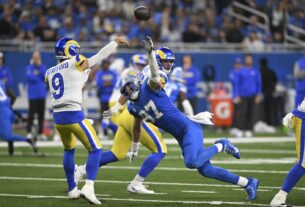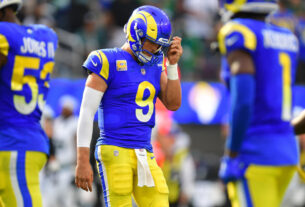The Chicago Bears and Cincinnati Bengals have two of the more storied franchises in the NFL, each with its own distinctive coaching history.
The paths of these teams, while different in many ways, have also intersected at key moments, particularly regarding their coaching staffs. The evolution of coaching within both organizations provides a fascinating lens through which we can better understand their successes, struggles, and the different styles that have shaped their identities over the years.
The Chicago Bears Coaching History
The Bears are one of the NFL’s oldest and most iconic franchises. Founded in 1919 as the Decatur Staleys, they became the Chicago Bears in 1922, and their history is deeply intertwined with the growth of the NFL itself. The Bears have won nine championships, including one Super Bowl title, and are known for their tough, physical style of play, a hallmark of their defensive-oriented culture.
Early Years and Legendary Coaches
The Chicago Bears’ coaching legacy began with George Halas, who is widely regarded as one of the most influential figures in NFL history. Halas, who both played and coached for the Bears, took over the team in its early years and was at the helm for 40 seasons. Under his leadership, the Bears won six NFL championships (1921, 1933, 1940, 1941, 1946, 1963), and Halas became a pioneering figure in the development of the game, helping to establish many of the league’s key features, including the draft system.
After Halas, the Bears struggled to find stability in their coaching staff for several years, but they eventually found success again with Mike Ditka, who coached the team from 1982 to 1992. Ditka, a former player for the Bears, brought a fiery, no-nonsense attitude to the team, which aligned well with the Bears’ tradition of hard-hitting football. Under Ditka’s leadership, the Bears won their only Super Bowl title in 1985, defeating the New England Patriots 46-10 in Super Bowl XX. That victory remains a high point in the franchise’s history, and Ditka is considered one of the most revered coaches in Bears history.
The next several decades saw the Bears go through a series of head coaches, none of whom were able to recapture the success of Ditka. Lovie Smith (2004–2012) brought a measure of stability back to the team with his strong defensive background. Smith led the Bears to Super Bowl XLI in 2007, where they were defeated by the Indianapolis Colts, but his tenure is remembered for restoring a competitive edge to the Bears and for his work in developing a formidable defense. Smith’s Bears teams were often known for their strong defensive units, particularly during the 2005–2006 seasons, when they boasted one of the league’s top defenses.
However, despite his success, Smith’s tenure ended after the 2012 season due to the team’s inability to progress in the postseason. Since then, the Bears have experienced a series of coaching changes, including John Fox (2015–2017), Matt Nagy (2018–2021), and, as of the latest seasons, Matt Eberflus (2022–present). Eberflus, in particular, is working to reestablish the defensive identity of the Bears while also developing the team’s young quarterback, Justin Fields.
The Cincinnati Bengals Coaching History
The Bengals, founded in 1968 by Paul Brown, are another historic franchise, though their path has been more turbulent than the Bears’. The team was established when Paul Brown was dismissed as head coach of the Cleveland Browns and went on to create a new franchise in Cincinnati. Brown brought a wealth of experience, having been instrumental in the founding of the Cleveland Browns, and he was known for his innovative approach to coaching, including introducing the use of film study and modern scouting techniques. His tenure as head coach of the Bengals lasted until 1975, and under his guidance, the Bengals became a competitive team, winning multiple division titles.
Success with Paul Brown and Early Struggles
Paul Brown’s impact on the Bengals was profound, and his tenure left a lasting legacy on the team. He helped the franchise become competitive early on, and the Bengals reached the playoffs in their first decade of existence. However, after Brown’s departure, the Bengals went through a series of head coaches, including Bill Johnson (1976–1978) and Forrest Gregg (1980–1983), with varying degrees of success.
The next defining era in Bengals coaching came with Sam Wyche (1984–1991). Wyche was a fiery coach who led the Bengals to two Super Bowl appearances (in 1981 and 1988), although they lost both times. Wyche’s 1988 team is widely regarded as one of the most talented in franchise history, led by quarterback Boomer Esiason and a powerful defense. The Bengals had one of the NFL’s most dangerous offenses, and Wyche was credited with creating the no-huddle offense, which became a staple in the league.
Despite the successes, the Bengals experienced more downs than ups in the years following Wyche’s tenure. The team had a string of losing seasons, and coaching changes were frequent. One notable coaching figure in the later years was Marvin Lewis (2003–2018), who became the longest-tenured head coach in franchise history. Under Lewis, the Bengals saw a resurgence in competitiveness, regularly making the playoffs, though they consistently fell short in the postseason, failing to win a single playoff game during his tenure.
The inability to win in the postseason haunted the Bengals throughout Lewis’s run, but the team remained a perennial playoff contender. Lewis’s defensive background helped build some of the best defenses in the NFL during his tenure, but the team often struggled with consistency on offense.
The New Era: Zac Taylor
In 2019, the Bengals hired Zac Taylor, who had previously been an assistant coach for the Los Angeles Rams. Taylor brought a fresh approach to a franchise that had long struggled to reach the highest levels of success. His hiring was part of a new vision for the Bengals, one that focused on offensive innovation and the development of a young quarterback, Joe Burrow. Taylor’s leadership quickly bore fruit. The Bengals went from a franchise that was mired in mediocrity to one that made a deep run in the 2021 playoffs, ultimately reaching Super Bowl LVI, where they lost narrowly to the Rams.
Under Taylor’s leadership, the Bengals have transformed into one of the most exciting offensive teams in the NFL, largely thanks to the development of Burrow and a high-powered receiving corps led by Ja’Marr Chase. The Bengals, once a franchise defined by its inability to win in the postseason, now seem poised to be perennial contenders in the AFC.
Coaching Connections and Differences
Despite the contrasting histories of the Bears and Bengals, there are notable parallels in their coaching trajectories, particularly in recent years. Both teams went through periods of instability after their high points, trying to rebuild with new leadership. For the Bears, it was after the Ditka years, and for the Bengals, it was after the departure of Sam Wyche and the eventual stagnation under Marvin Lewis. Both teams found success when they hired coaches who could develop strong defensive units (Smith for the Bears, Lewis for the Bengals) but struggled to win in the postseason.
One of the more interesting aspects of both teams’ recent coaching histories is the focus on developing young quarterbacks. The Bears, under Matt Nagy and later Matt Eberflus, have worked to develop Justin Fields, while the Bengals under Zac Taylor have seen the rapid development of Joe Burrow into one of the NFL’s elite quarterbacks. Both teams are trying to strike the right balance between coaching experience, offensive innovation, and building a team around their young stars.
Looking Ahead
As of 2024, both the Bears and the Bengals are in interesting positions. The Bears are still in the early stages of their rebuild under Matt Eberflus, and while they have a promising young quarterback in Justin Fields, their offensive struggles remain a concern. The Bengals, on the other hand, are coming off of several successful seasons and remain one of the top teams in the AFC with Zac Taylor and Joe Burrow leading the charge. The future of both teams hinges on their ability to continue developing their quarterbacks and finding the right balance of offensive and defensive play to win championships.
Ultimately, the coaching histories of the Bears and Bengals provide a fascinating contrast between two NFL franchises, each with its own unique challenges, successes, and visions for the future. Both teams have experienced highs and lows, but they remain resilient, and their coaching futures will play a key role in determining their standing in the NFL for years to come.



